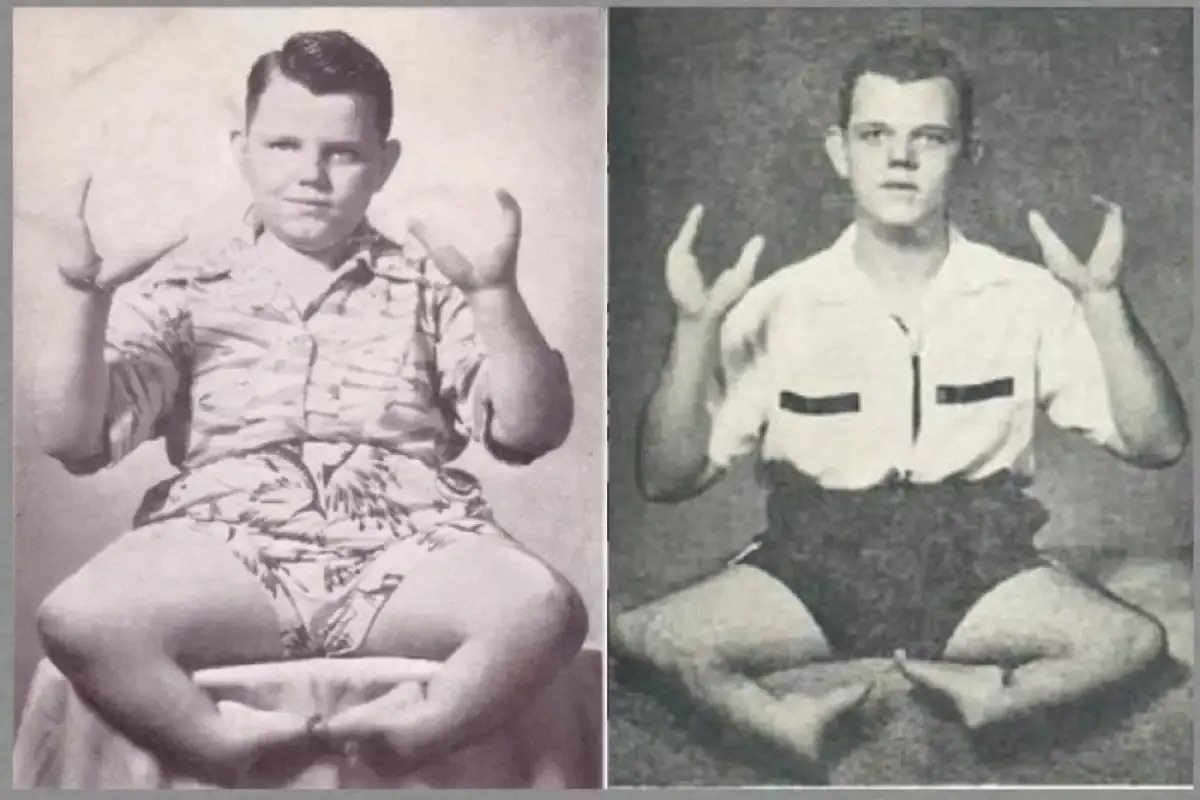
Who was Lobster Boy? Grady Stiles Jr., famously known as Lobster Boy, was a sideshow performer born with a rare condition called ectrodactyly, which caused his fingers and toes to fuse, resembling lobster claws. His life was a mix of fame and tragedy, marked by his performances in carnivals and a tumultuous personal life. Grady's story isn't just about his unique appearance; it's also about the darker aspects of his life, including his struggles with alcoholism and violence. Despite his challenges, he left an indelible mark on the world of sideshow entertainment. Dive into these 35 intriguing facts to learn more about the man behind the legend.
Key Takeaways:
- Grady Stiles Jr., also known as Lobster Boy, had a challenging yet fascinating life in the circus due to his rare condition, ectrodactyly, which shaped his career and personal relationships.
- Despite his flaws and tragic end, Lobster Boy's life continues to captivate audiences and inspire various forms of media, leaving a lasting impact on popular culture and serving as a cautionary tale about fame and the human condition.
The Early Life of Lobster Boy
Grady Stiles Jr., famously known as Lobster Boy, was born with a rare condition that shaped his life in extraordinary ways. Here are some fascinating facts about his early years.
- Grady Stiles Jr. was born on June 26, 1937, in Pittsburgh, Pennsylvania.
- He had a rare congenital deformity called ectrodactyly, which caused his fingers and toes to fuse, resembling lobster claws.
- Ectrodactyly ran in his family, affecting multiple generations.
- Grady's father, Grady Stiles Sr., also had ectrodactyly and worked in the circus as a sideshow performer.
- Grady Jr. joined the family business at a young age, performing in sideshows as "Lobster Boy."
Life in the Circus
Grady's life in the circus was both fascinating and challenging. His unique condition made him a star, but it also brought its own set of difficulties.
- Grady Stiles Jr. became one of the most famous sideshow performers in the United States.
- He performed with various circuses, including the renowned Ringling Bros. and Barnum & Bailey Circus.
- Despite his fame, Grady faced significant physical challenges due to his condition.
- He used a wheelchair for mobility because his legs were also affected by ectrodactyly.
- Grady's performances often involved showcasing his unique hands and feet to curious audiences.
Personal Life and Relationships
Grady's personal life was as complex as his professional one. His relationships were marked by both love and turmoil.
- Grady married twice, first to Mary Teresa and later to Barbara Browning.
- He had four children, two of whom inherited ectrodactyly.
- Grady's relationships were often tumultuous, marked by allegations of abuse and violence.
- He struggled with alcoholism, which exacerbated his violent tendencies.
- Despite his flaws, Grady was a devoted father to his children.
The Dark Side of Lobster Boy
Grady's life took a dark turn, leading to a series of tragic events that would forever change his legacy.
- In 1978, Grady was convicted of murdering his daughter's fiancé, Jack Layne.
- He shot Layne in cold blood, claiming he did it to protect his daughter.
- Due to his physical condition, Grady avoided prison and was instead sentenced to 15 years of probation.
- His violent tendencies continued, leading to further allegations of abuse.
- Grady's family lived in fear of his unpredictable behavior.
The Murder of Lobster Boy
Grady's life ended in a shocking and violent manner, adding another layer of intrigue to his already complex story.
- On November 29, 1992, Grady Stiles Jr. was murdered in his home in Gibsonton, Florida.
- His wife, Mary Teresa, and her son from a previous marriage, Glenn Newman, were implicated in the murder.
- Mary Teresa claimed she hired a hitman to kill Grady because she feared for her life and the lives of her children.
- The hitman, Chris Wyant, was paid $1,500 to carry out the murder.
- Wyant shot Grady in the head while he was watching television.
The Aftermath and Legacy
The aftermath of Grady's murder left a lasting impact on his family and the sideshow community.
- Mary Teresa was sentenced to 12 years in prison for her role in the murder.
- Glenn Newman received a life sentence for his involvement.
- Chris Wyant was sentenced to 27 years in prison for the murder.
- Grady's death brought an end to a tumultuous and violent chapter in his family's history.
- Despite his flaws, Grady remains a significant figure in sideshow history.
The Cultural Impact of Lobster Boy
Grady Stiles Jr.'s life and death have left a lasting impact on popular culture, inspiring various forms of media.
- His story has been featured in numerous documentaries and television shows.
- The character of Jimmy Darling in the TV series "American Horror Story: Freak Show" was inspired by Grady Stiles Jr.
- Books and articles have been written about his life, exploring the complexities of his character.
- Grady's life serves as a cautionary tale about the dark side of fame and the human condition.
- His legacy continues to intrigue and captivate audiences, ensuring that the story of Lobster Boy will not be forgotten.
The Legacy of Lobster Boy
Grady Stiles Jr., known as Lobster Boy, left a mark on the world of sideshows and true crime. Born with ectrodactyly, his unique appearance made him a star in the carnival circuit. However, his life was marred by violence and tragedy. Grady's abusive behavior and criminal actions, including the murder of his daughter's fiancé, painted a dark picture. His own murder in 1992, orchestrated by his family, added another layer to his infamous story.
Despite the grim aspects, Grady's life sheds light on the challenges faced by those with physical deformities in the entertainment industry. His story serves as a reminder of the complexities of human nature and the impact of fame on personal lives. The tale of Lobster Boy remains a fascinating, albeit tragic, chapter in the annals of sideshow history.
Frequently Asked Questions
Was this page helpful?
Our commitment to delivering trustworthy and engaging content is at the heart of what we do. Each fact on our site is contributed by real users like you, bringing a wealth of diverse insights and information. To ensure the highest standards of accuracy and reliability, our dedicated editors meticulously review each submission. This process guarantees that the facts we share are not only fascinating but also credible. Trust in our commitment to quality and authenticity as you explore and learn with us.


